CHs 14 & 15; Assessing Hair, Skin, and Nails
1/52
There's no tags or description
Looks like no tags are added yet.
Name | Mastery | Learn | Test | Matching | Spaced |
|---|
No study sessions yet.
53 Terms
epidermis
The outermost layer of skin that provides a barrier against environmental damage and pathogens.
dermis
The layer of skin beneath the epidermis that contains connective tissue, hair follicles, and sweat glands
sebaceous glands
Small oil-producing glands located in the dermis that secrete sebum, which helps to moisturize and protect the skin
sweat glands
Glands located in the dermis that produce sweat to help regulate body temperature and remove waste
subcutaneous layer of the skin
The innermost layer of skin composed of fat and connective tissue, providing insulation and cushioning
vellus hair
Fine, soft, unpigmented hair found on the body.
terminal hair
Thicker, coarser hair found on the scalp, face, and body, often pigmented and longer than vellus hair.
nail body
The visible part of the nail that extends beyond the nail bed, composed of keratinized cells.
lunula
The crescent-shaped, whitish area at the base of the nail, representing the growth of the nail matrix.
basal cell carcinoma
A type of skin cancer that originates from basal cells in the epidermis, characterized by slow growth and a low risk of metastasis

squamous cell carcinoma
A type of skin cancer that arises from squamous cells in the epidermis, often appearing as a firm, red nodule or a flat sore that bleeds or crusts

melanoma
A serious type of skin cancer that develops from melanocytes, appears as a dark mole/spot with irregular edges and spreads rapidly
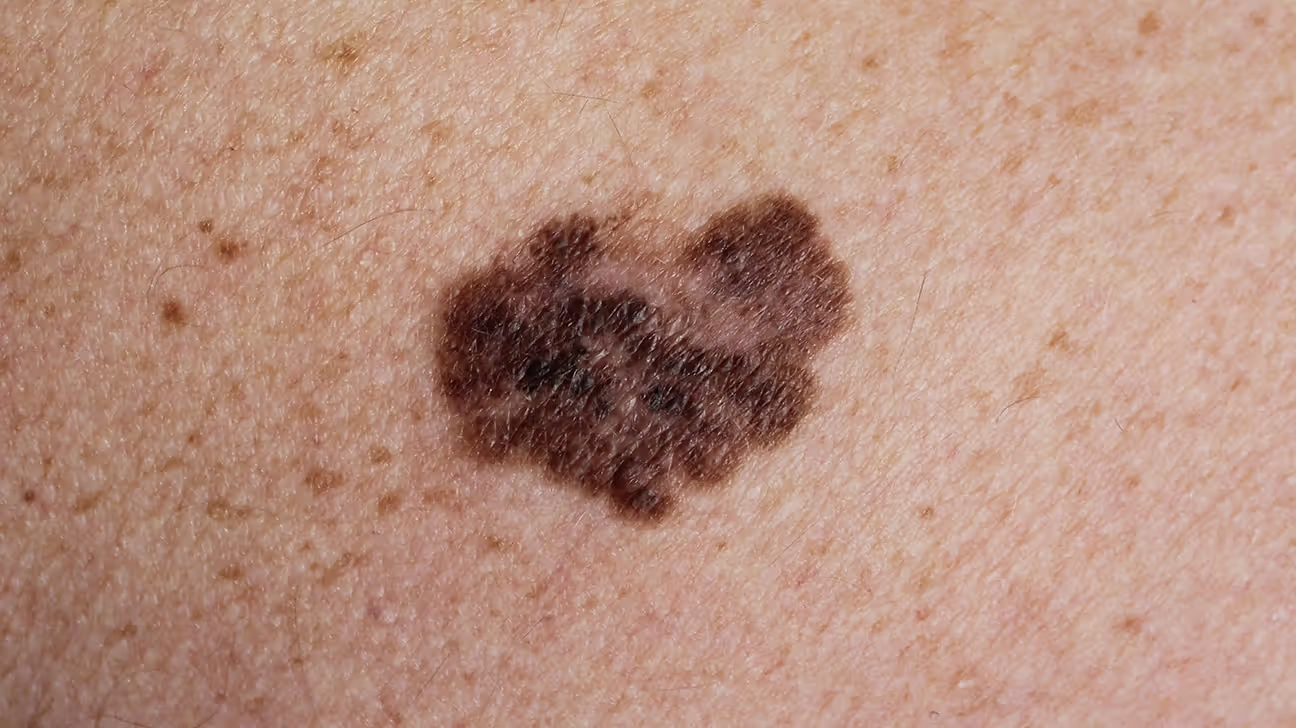
risk factors of skin cancer
include excessive sun exposure, fair skin, a history of sunburns, and family history of skin cancer; male gender HPV, depressed immune system
what type of education should be provided to patients about skin cancer
they should reduce sun exposure/use sunscreen, wear long sleeves/hats/sunglasses, have enough VB (niacin) in the diet, do self assessments using ABCDE acronym
What is the ABCDE acronym used for determining skin cancer
Asymmetry
Borders
Color
Diameter
Elevated
what is the highest risk factor for MRSA?
impaired skin integrity
what is some education that can be provided to patients regarding MRSA?
keep wounds covered, don’t share personal items, don’t stop treatment until recovery has been complete, use universal precautions when touching others/wash hands, clean equipment, wash clothes/linens/razors/etc.
stage 1 pressure injury
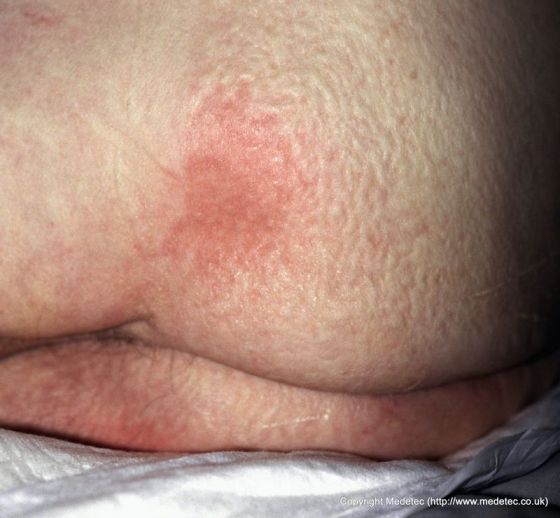
stage 2 pressure injury
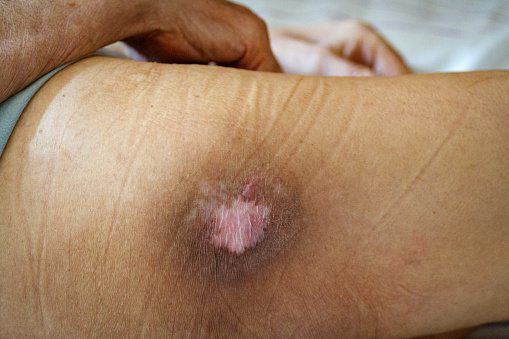
stage 3 pressure injury

stage 4 pressure injury

unstageable pressure injury

Abscess
a localized collection of pus caused by infection
bullae
fluid filled, elevated, superficial lesion greater than 1 cm in diameter
crust
resulted from dry secretions over the skin
cyanosis
bluish-gray discoloration of the skin resulting from presence or abnormal amounts of reduced hemoglobin in the blood
cyst
a closed sac containing liquid or semisolid material
ecchymyosis
discoloration of skin caused by leakage of blood into subcutaneous tissue
excoriation
scratch or abrasion on the skin surface
fissure
linear crack in the skin surface of tissue or organ
macule
flat, circumscribed lesion of the skin or mucous membrane that is 1 cm or less in diameter
nodule
solid skin elevation that extends into the dermal layer and that is 1-2 cm in diameter; a form of papule but larger and deeper
papule
solid, elevated superficial lesion 1 cm or less in diameter
Petechiae
tiny, flat, purple or red spots on the surface of the skin resulting from little bleeding within the dermal or submucosal layers
pruritus
itchy skin
purpura
hemorrhage into the tissue usually circumscribed; lesions may be described as petechiae or ecchymosis depending on size
pustule
vesicle or bullae that contains pus
ulcer
circumscribed open wound on the surface of the skin or mucous membrane
urticaria
hives; raised and itchy skin that is usually a sign of an allergic reaction or irritation
vesicle
fluid filled, elevated, superficial lesion 1 cm or less in diameter
wheal
flat topped elevation in the skin that is edematous and erythematous
hematoma
a collection of blood that pools outside of blood vessels in an organ, tissue, or body space
cherry angioma
a small, noncancerous, bright red bump on the skin that's made up of dilated capillaries
cricoid cartilage
A ring-shaped cartilage located in the larynx, providing support and structure to the airway.
D
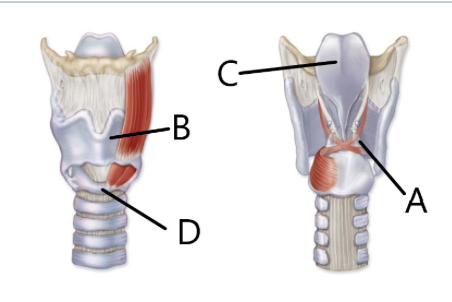
thyroid cartilage
A large cartilage in the larynx that forms the Adam's apple and provides protection to the vocal cords.
B
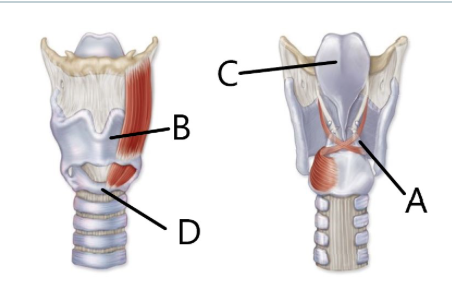
preauricular lymph nodes
1
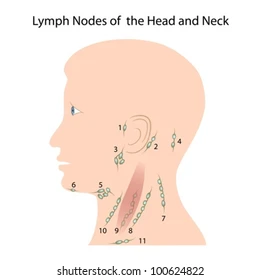
Postauricular lymph nodes
2
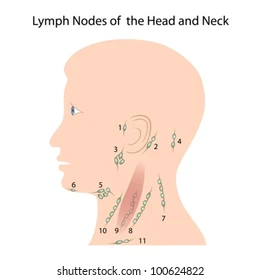
Tonsillar lymph nodes
3
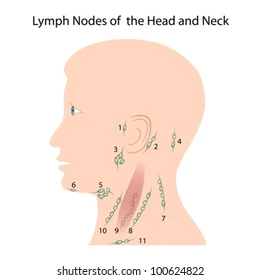
occipital lymph nodes
4
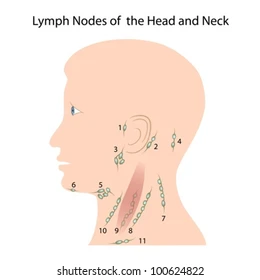
Submandibular lymph nodes
5
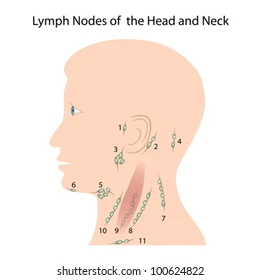
submental lymph nodes
6
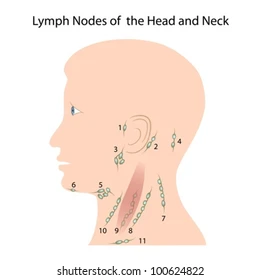
supraclavicular lymph nodes
11
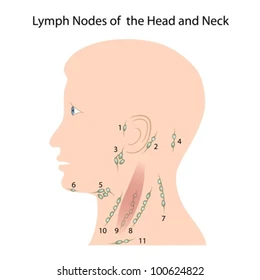
symptoms of hypothyroidism
“everything slows down”
Sleepiness
Cold intolerance
Weight gain
Muscle aches
Fatigue
Menstrual irregularities
Pale, dry skin
Thin, brittle hair or nails
Bradycardia
Constipation
Unintentional weight gain